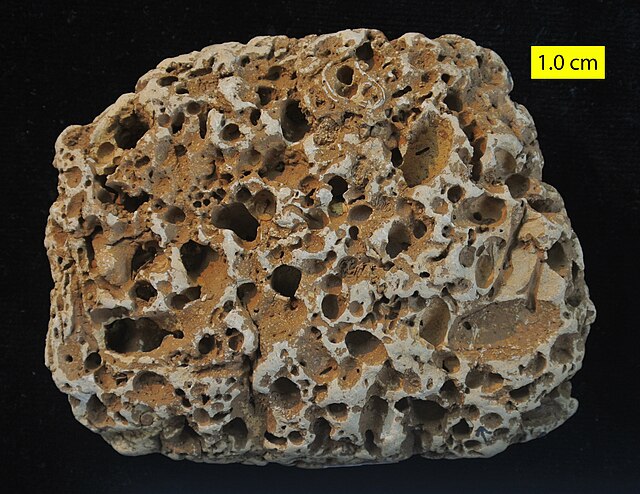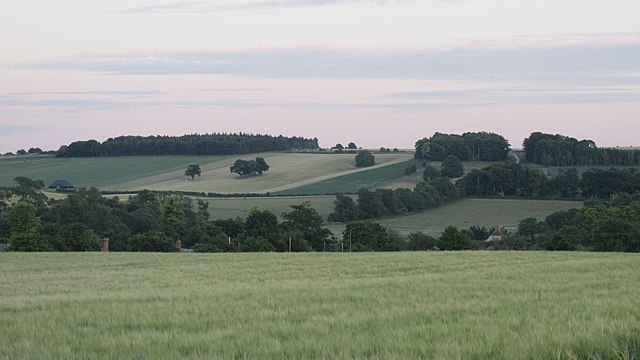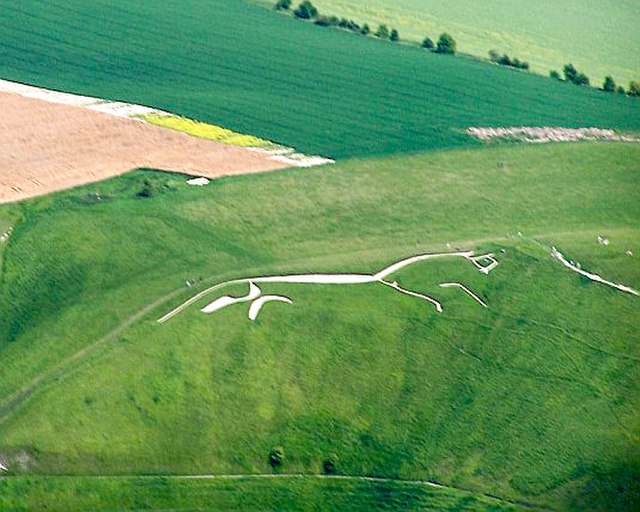Faringdon is a historic market town in the Vale of White Horse, Oxfordshire, England, 18 miles (29 km) south-west of Oxford, 10 miles (16 km) north-west of Wantage and 12 miles (19 km) east-north-east of Swindon. It extends to the River Thames in the north; the highest ground is on the Ridgeway in the south. Faringdon was Berkshire's westernmost town until the 1974 boundary changes transferred its administration to Oxfordshire. The civil parish is formally known as Great Faringdon, to distinguish it from Little Faringdon in West Oxfordshire. The 2011 Census gave a population of 7,121; it was estimated at 7,992 in 2019. On 1 February 2004, Faringdon became the first place in south-east England to be awarded Fairtrade Town status.
The Old Town Hall
All Saints' Parish Church
Faringdon Folly
Numerous borings in a Cretaceous cobble from Faringdon. These are examples of fossil bioerosion.
The Vale of White Horse is a local government district of Oxfordshire in England. It was historically part of Berkshire. The area is commonly referred to as the 'Vale of the White Horse'. It is crossed by the Ridgeway National Trail in its far south, across the North Wessex Downs AONB at the junction of four counties. The northern boundary is defined by the River Thames. The name refers to Uffington White Horse, a prehistoric hill figure.
Characteristic landscape of farmland, hills and woodlands
A panoramic view into the Vale; the White Horse is on the right and Dragon Hill centre right
Vale scene, with White Horse Hill on the horizon
The Uffington White Horse, as seen from an altitude of about 600 m (2000 ft), from the cockpit of a glider








